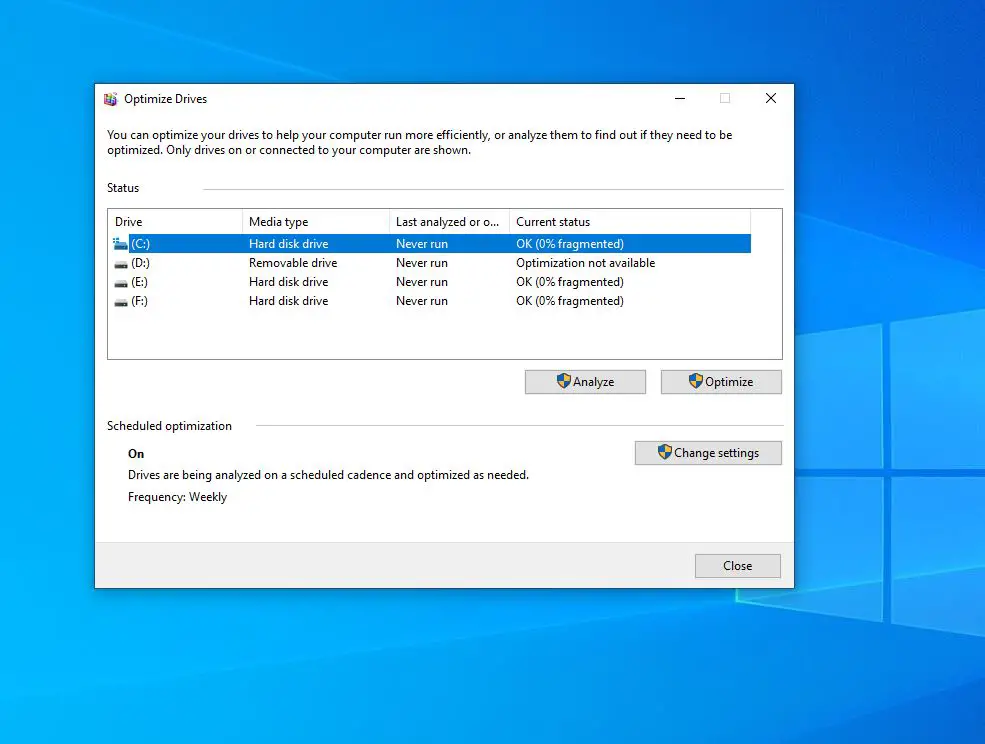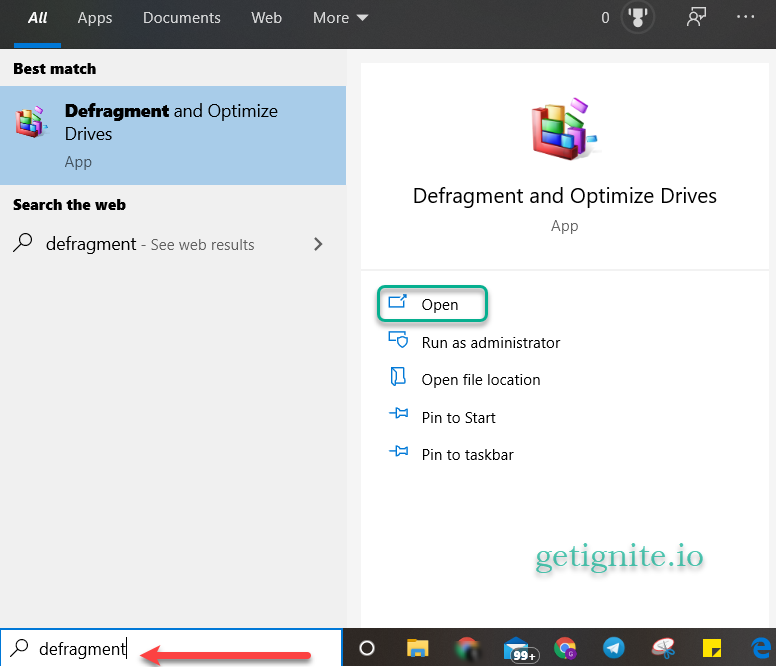
If the analysis shows the drive at 10% fragmented or less, you don’t need to defrag. In the Optimize Drives app, select the hard drive you’d like to defragment.In the Taskbar Search, enter Defragment and Optimize Drives.With that said, here’s how to defrag in Windows 10 and 11: This is an informational article, so we’ll provide the steps for triggering a manual defrag below - but you probably don’t need to do this outside of very specific circumstances. To reiterate, Windows 10 and 11 perform performance optimizations automatically. Related: How Can I Tell If My Hard Drive is Broken? Manually Defragging a Hard Drive in Windows 10 and 11 Check your backup to make sure that it works before proceeding. The bottom line: Before defragging your hard drive manually, back up all important data. In most cases, defragging a hard drive will not “fix” corrupt files.


Windows 10 and Windows 11 have scheduled optimizations that run every day. Hard Drive Defragmentation in Windows 10 & Windows 11 However, most modern operating systems handle defragging automatically. The heads that access the magnetic charges need to do more work (or, to use extremely technical terminology, they jump all over the place).ĭefragging your hard drive consolidates data, improving speed and reducing wear on your hard drive’s physical components. This is normal - but over time, the hard drive may take longer to read and write data. A single file might be written to two completely different areas of the magnetic platters that store your data. Here’s how it works: As your hard drive operates, it constantly writes and deletes files. The platters and actuator heads of a hard drive.


 0 kommentar(er)
0 kommentar(er)
